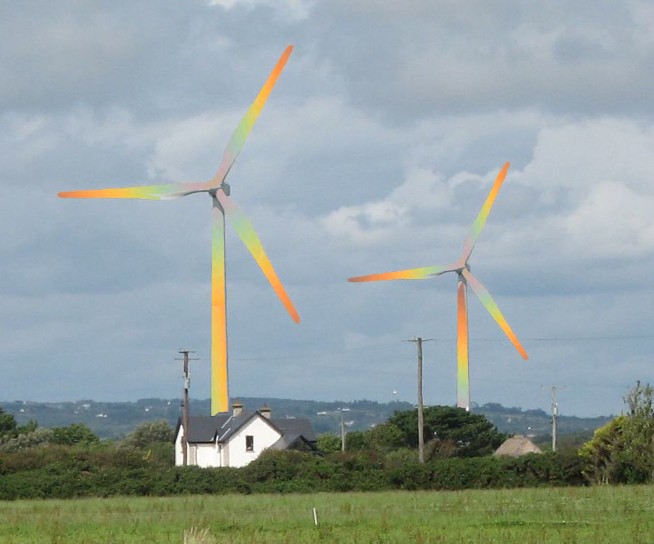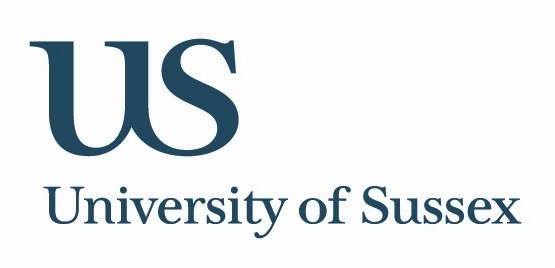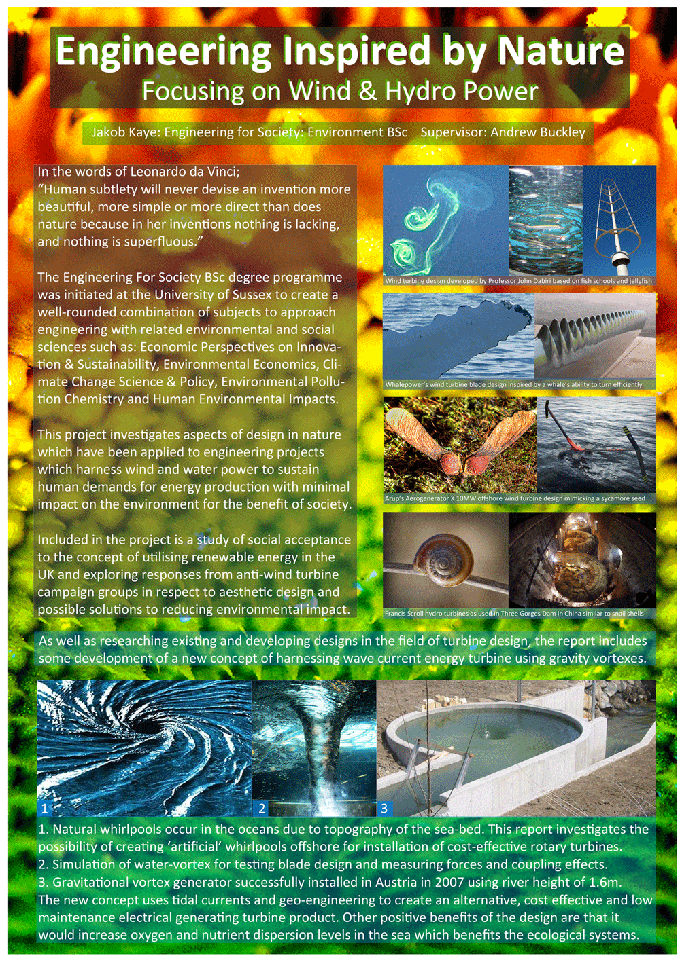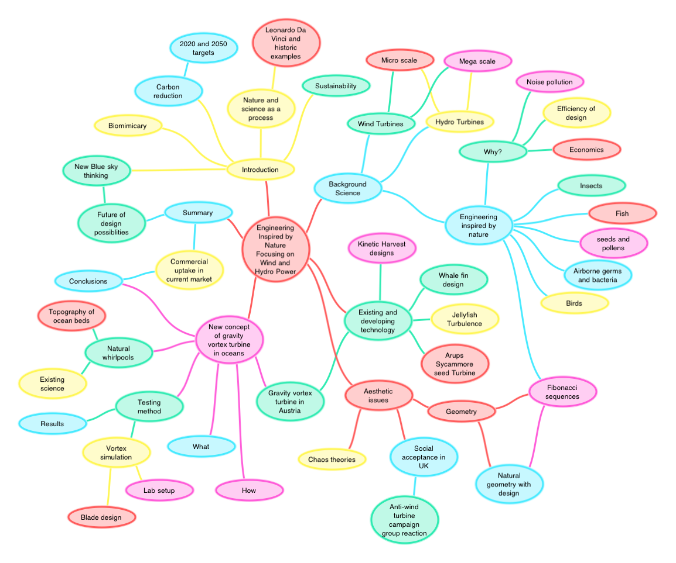Jakob Kaye BSc (with Honours).

image above: Having investigated and researched anti-wind turbine campaign groups to be told that there is nothing in nature so big which you could disguise the aesthetics of a turbine I have come up with this solution of simply using colour to 'celebrate' the beauty of turbines in a natural way.

'Engineering For Society: Envionment' BSc
The degree was designed to create a 'new breed of engineers' who could communicate closely with social scientists. Unfortunately funding was cut at the University and the dean of Engineering and Design school would not allow this degree to continue as he wanted to concentrate on more traditional engineering, however the six of us who are studying this degree support its concept and I wholly believe this syllabus covers extremely relevant issues for engineers today.
the syllabus covered the following modules:
- Mathematical skills for engineering design
- Statistics for engineers
- Principles of Technology
- Technology for 21st Century
- Selection of materials levels 1 and 2
- Visual communication
- Engineering design
- Electrical design
- Design, modelling and manufacture levels 1, 2 and 3
- Computing with Matlab
- Web 3D applications
- Human computer interaction / human machine interaction
- Projects management and ethics
- Business and project management
- Environmental economics
- Economic perspectives on sustainability
- Economic perspectives on innovation
- Global Climate change and environmental cycles
- Climate change science and policy
- Human environmental impacts: Case studies
- Aquatic Pollution, processes and impacts
- Environmental chemistry
the full syllabus can be found at HERE
For my final year report I specialised in 'Engineering Inspired by Nature Focusing on Wind and Hydro Power':
Included in the report was an investigation into a new ocean wave / hydrokinetic power design concept which I am still currently developing for commercial applications.

The structure of the dissertation is outlined here. Once the report has been marked and assessed by the University examination board, it will be published on the site.

